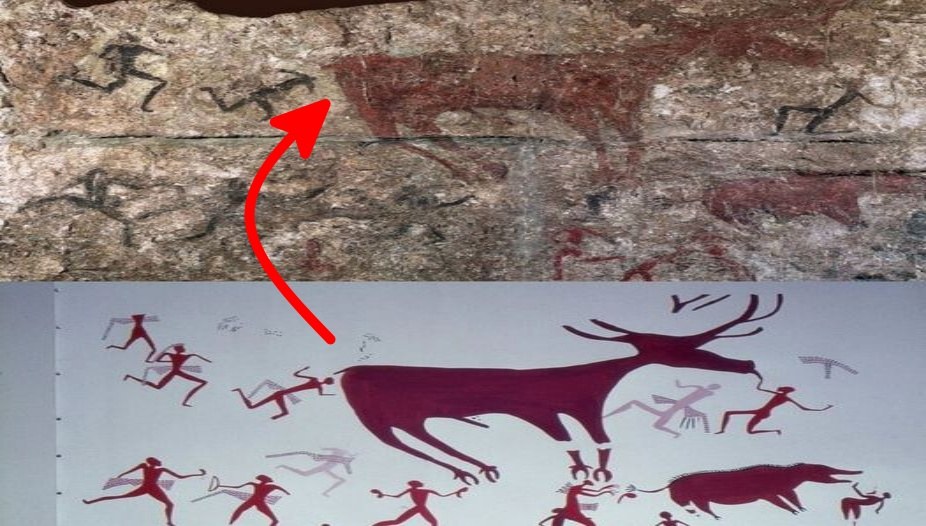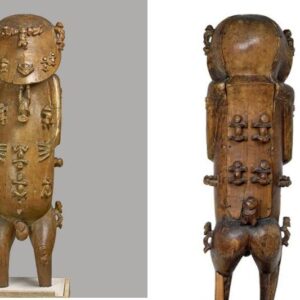Çatalhöyük, located in modern-day Turkey, is one of the most significant archaeological sites of the Neolithic era. This ancient settlement, dating back approximately 8000 years, offers a rare glimpse into early human civilization. Among its many remarkable discoveries, the wall paintings stand out as a testament to the artistic expression and cultural practices of its inhabitants.
The wall paintings of Çatalhöyük are not merely decorative but are believed to hold profound significance, reflecting the community’s beliefs, rituals, and daily life. These artworks were primarily found on the plastered walls of domestic buildings, indicating that they played an integral role in the homes of Çatalhöyük’s residents. The paintings typically feature geometric patterns, hunting scenes, and symbolic imagery, suggesting a deep connection with their environment and spiritual world.

One of the most famous murals discovered at Çatalhöyük is often referred to as the “Map Mural.” This painting is thought to be a depiction of the settlement itself, possibly representing one of the earliest known maps. The mural shows a series of rectangular shapes, interpreted as houses, with a backdrop of what some archaeologists believe to be a volcanic eruption, possibly Mount Hasan, which is visible from the site. This interpretation suggests that the inhabitants were not only aware of their immediate surroundings but also sought to document significant events.
Another prominent theme in the wall paintings is hunting, which was a crucial aspect of life in Çatalhöyük. Scenes depicting groups of hunters chasing wild animals, such as deer and boar, provide valuable insights into the techniques and tools used by these early people. These depictions also highlight the community aspect of hunting, emphasizing cooperation and shared efforts, which were vital for survival.
The geometric patterns prevalent in many of the wall paintings are believed to have symbolic meanings. These patterns might represent various elements of their cosmology, social structure, or agricultural practices. The repetitive nature of these designs could indicate ritualistic purposes, serving as a means to convey important cultural narratives or to invoke protective spirits.
The preservation of these wall paintings over millennia is a remarkable feat, attributed to the construction methods and materials used by the people of Çatalhöyük. The walls were made from mud bricks and plaster, with layers of paint applied on top. The buildings were frequently remodeled, with new layers of plaster and paint added, which inadvertently helped to protect the underlying artworks from the ravages of time.
The discovery and study of the wall paintings at Çatalhöyük have been instrumental in understanding the artistic and cultural practices of early agrarian societies. They reveal a community that valued artistic expression and used it as a medium to communicate important aspects of their lives and beliefs. These paintings provide a tangible connection to our ancestors, allowing us to appreciate the complexity and depth of early human societies.
In conclusion, the 8000-year-old wall paintings from Çatalhöyük are more than just ancient art; they are a window into the past, offering insights into the lives, beliefs, and practices of one of the earliest known human settlements. As archaeologists continue to study these remarkable artworks, we can expect to learn even more about the people who created them and the world they inhabited.
News
The stunning Temple of Garni, Armenia. Built nearly 2,000 years ago.
Nestled amidst the rugged terrain of Armenia stands a testament to ancient splendor: the stunning Temple of Garni. Built nearly 2,000 years ago, this architectural marvel is…
Reviving the Ancient Abu Simbel Temples: Restoration Efforts in Aswan, Egypt, 1968
In 1968, an extraordinary feat of human endeavor unfolded on the banks of the Nile River in Aswan, Egypt. The ancient Abu Simbel temples, standing for over…
Rare and Ancient Sculpture of Lord Ganesha Carved into the Rocks at Raghunandan Hills (Unakoti)
Nestled amidst the rugged terrain of Raghunandan Hills lies a treasure trove of history and spirituality — the rare and ancient sculpture of Lord Ganesha, immortalized in…
African Architecture: The Unique Construction of Djenné’s Great Mosque
In the heart of Mali lies a testament to human ingenuity and cultural heritage: The Great Mosque of Djenné. Built with indigenous materials, primarily mud brick and…
Bronze Spartan Shield from the Battle of Sphacteria 425 BC Displayed at Athenian Agora Museum
Among the many treasures housed at the Athenian Agora Museum, one artifact stands out for its historical significance and the stories it holds: a bronze Spartan shield,…
Enigmatic Pacific Deity: Captivating Polynesian Artistry
In the heart of Polynesia, amidst the whispers of the Pacific winds and the rhythm of ancient chants, lies a testament to the spiritual and artistic richness…
End of content
No more pages to load











